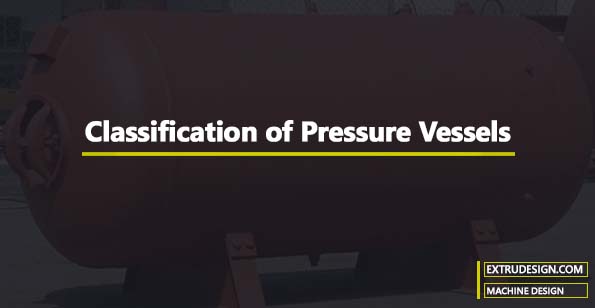You must have seen heavy vehicles transporting fluids such as water/petroleum or steam boilers in some industrial plants etc. with a cylindrical structure called tanks or Pressure vessels. These Pressure vessels are used to store the fluids under the pressure. Since these fluids are stored under pressure, these may undergo a state of change inside the pressure vessel. There should be a very high amount of care that should be taken while designing a pressure Vessel. A rupture of a pressure vessel means an explosion that may lead to loss of property or even many lives. In this article, we are going to discuss the Classification of Pressure Vessels.

The pressure Vessels are classified as follows.
Pressure Vessels According to the Dimensions
- According to the dimensions, the pressure vessels are classified as thin shell and Thick shell.
- The thin shell if the wall thickness (t) of the shell is less than 1/10 of the diameter (d) of the shell.
- The thick shell when the thickness(t) of the shell is greater than 1/10 of the diameter (d) of the shell.
- Also, we can classify the pressure-vessels under the thin shell and thick shell based on the fluid pressure (p) and the allowable stress (σ).
- If the internal fluid pressure (p) is less than 1/6th of the allowable stress (σ) then those vessels come under the thin shells.
- If the internal fluid pressure (p) is greater than 1/6th of the allowable stress (σ) then those vessels come under the thick shells.
- Mostly thin shells are used in the boilers, pipes and tanks, heat exchanger tanks.
- The thick shells are used in high-pressure cylinders and high-pressure tanks and gun barrels.
Pressure Vessels According to the end Construction
- According to the end construction, the pressure vessels may be classified as open-end or closed-end.
- open-end vessel are the one with a simple cylinder with a piston, such as a cylinder of a press.
- Whereas a tank is an example of a closed-end vessel.
- In the case of vessels having open ends, the circumferential or hoop stresses are induced by the fluid pressure.
- whereas in the case of closed ends, longitudinal stresses in addition to circumferential stresses are induced
Conclusion
We have discussed the two different Classifications of Pressure Vessels. We have discussed the different stresses induced in the pressure vessel and the design of the Pressure Vessel in the next article. Please also have a look at them.

Leave a Reply